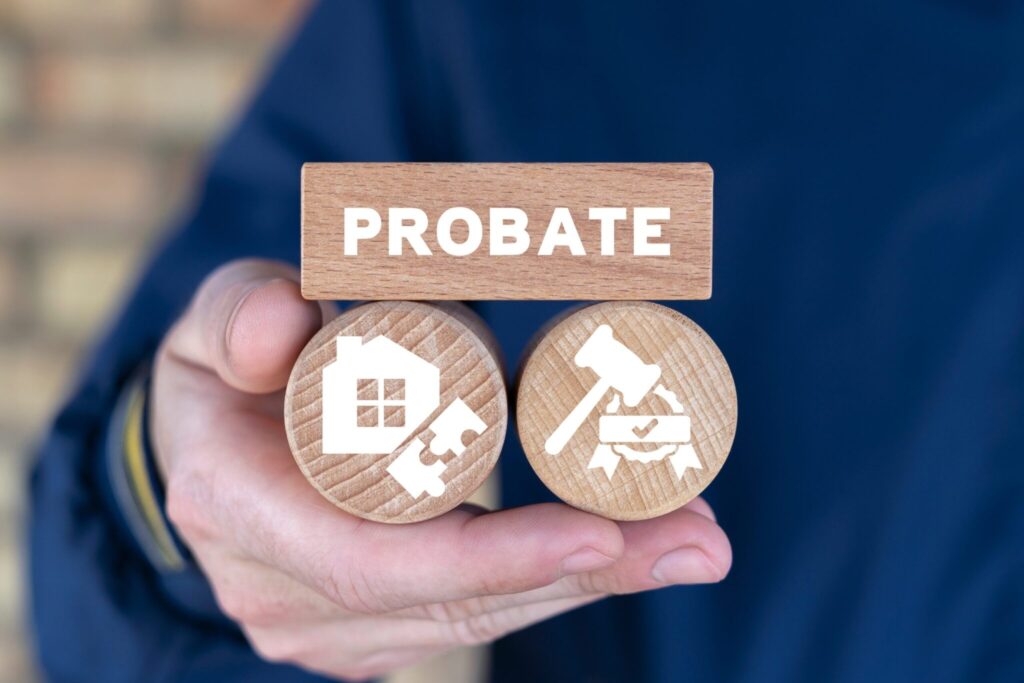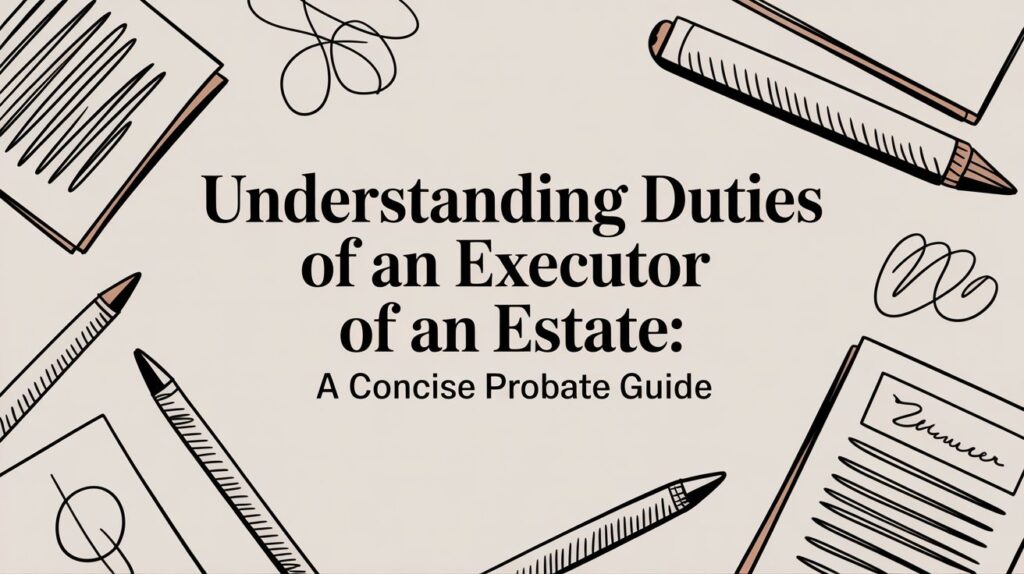If you’re navigating the aftermath of a loved one’s passing and there’s property left behind, one question probably looms large: how to probate a property in Texas? The probate process in Texas can be surprisingly efficient when done right—but it does come with legal requirements, important filing deadlines, and very specific documents. Missing a step could delay the transfer of ownership or even lead to costly mistakes.
In this comprehensive guide, we’ll walk you through the entire process of probating property in Texas, whether it’s a home, land, or other real estate asset. With real-life examples, practical steps, and a conversational tone, this article is designed to make a complex legal procedure feel far more manageable—especially if this is your first time acting as an executor or administrator.

What Does Probate Really Mean in Texas?
Before diving into how to probate a property in Texas, let’s clarify what probate actually is. Probate is the court-supervised legal process of administering a deceased person’s estate—paying off debts and distributing assets to heirs or beneficiaries.
In Texas, probate can take several forms:
- Independent Administration: Most common; less court supervision.
- Dependent Administration: Requires court approval for most actions.
- Muniment of Title: A simplified process used when a valid will exists and there are no debts (other than those secured by real estate).
- Small Estate Affidavit: For estates valued under $75,000, excluding the homestead.
Each path has its own pros, cons, and eligibility requirements. But no matter the form, real property like land or a home will typically require probate unless title transfer was arranged outside of probate (like through a trust or survivorship agreement).
Real-Life Story: Jennifer’s Unexpected Role
Jennifer, a 42-year-old teacher from San Antonio, lost her mother unexpectedly. Her mother’s house wasn’t in a trust, and there were no joint owners listed on the deed. Jennifer found herself in charge of the estate—without knowing what probate even meant.
After a Google spiral and some guidance from a local attorney, she learned she had to probate the property to legally transfer ownership into her name. Filing in Bexar County probate court, she started the process as an independent executor. While the experience was stressful, following the required steps made everything smoother in the long run.
Her journey reflects what so many Texans go through—and highlights why understanding how to probate a property in Texas is critical for families managing inheritance.
Step 1: Determine If Probate Is Required
Not every property has to go through probate. The key question is how the property was titled and whether there were any alternate transfer methods in place.
Probate May Be Required If:
- The decedent was the sole owner of the property.
- The property title does not list a right of survivorship.
- There is no trust in place.
- There is no recorded Transfer-on-Death Deed (TODD).
Probate May Not Be Required If:
- The property was owned as joint tenants with right of survivorship.
- The property was part of a living trust.
- A valid TODD was executed and recorded before death.
If probate is necessary, you’ll need to initiate a case in the county where the decedent lived at the time of death.
Step 2: File an Application for Probate
This is the official start of the process. You must file an Application for Probate in the appropriate county probate court. If there’s a will, you’ll also file the original version with the application.
Filing Deadline:
In Texas, probate must be initiated within four years of the decedent’s death. If you miss this deadline, your options become more limited, and you may need to pursue probate as an heirship proceeding.
Your application will include:
- Name and date of death of the decedent
- List of heirs or beneficiaries
- Description of property, including location and estimated value
- Request to be appointed executor or administrator

Once filed, the court will post public notice and set a hearing date—usually within 10 to 30 days.
Step 3: Attend the Probate Hearing and Take the Executor’s Oath
At the court hearing, the judge will verify that the will is valid (if one exists) and that the applicant is qualified to serve. If all goes well, the judge will:
- Admit the will to probate
- Appoint the executor or administrator
- Issue Letters Testamentary (if there’s a will) or Letters of Administration (if there isn’t)
You’ll also be required to sign an oath of office, swearing to faithfully carry out your duties.
If the will does not waive bond, you may need to post a bond before the court issues letters. This ensures that the estate is protected from any potential mismanagement.
Step 4: File an Inventory, Appraisement, and List of Claims
Once you’ve been appointed, you have 90 days to file the estate inventory. This includes:
- Description and value of all estate property (including the home or land)
- Any debts owed to the estate
- Any claims against the estate
Be as accurate and detailed as possible. The court uses this inventory to confirm the estate’s size and complexity. In some cases, an Affidavit in Lieu of Inventory may be filed if the estate is straightforward and all heirs agree.
For property, you may need a licensed appraiser to determine fair market value. This will matter later during asset distribution, property sale, or tax calculations.
Step 5: Handle Creditors, Taxes, and Property Expenses
Before you can distribute property or close the estate, all debts and obligations must be settled. As the executor, you’re responsible for:
- Publishing a Notice to Creditors in a local newspaper
- Sending notice to known creditors
- Paying valid debts from estate funds
- Covering mortgage payments, property taxes, or insurance costs

If the estate doesn’t have enough liquid assets to pay creditors, you may need to sell property. In that case, you’ll need court approval if you’re acting as a dependent administrator. If you’re an independent executor, you have more freedom—but documentation is still essential.
Step 6: Transfer the Property Title
Now comes the part most heirs care about—transferring ownership of the home or land. Once all debts are settled and court approval is secured (if required), you’ll need to:
- Draft and record a new deed showing the change in ownership
- Reference the probate case number and judgment in the deed
- File the deed with the county clerk’s office where the property is located
- Update property tax records and exemptions (like homestead or over-65)
If multiple heirs inherit the property, you may need to coordinate buyouts, partition agreements, or a property sale.
Understanding how to probate a property in Texas includes knowing how to legally and effectively record that transfer—without disputes down the road.
Real-Life Story: Frank and the Title Snag
Frank, a Houston firefighter, inherited his aunt’s home in Harris County. He assumed he could just start fixing it up and eventually move in. But when he tried to get utilities turned on, he hit a wall. The property was still legally in her name—and no probate case had been filed.
After hiring a probate attorney, Frank went through the proper channels and got appointed as administrator. He filed the required documents, paid off small debts, and eventually transferred the title into his name. What seemed like a small detail turned out to be the key to accessing and managing the property legally.
Step 7: Distribute Remaining Assets and Close the Estate
Once the property has been handled and all estate matters resolved, it’s time to wrap up. You’ll need to:
- Distribute remaining estate assets (bank funds, personal items, etc.)
- Collect signed receipts from heirs or beneficiaries
- File a Final Accounting with the court, if required
- Request a closing order or discharge of the executor role
After the estate is closed, your legal responsibility ends—and the heirs can enjoy peace of mind knowing everything was done correctly.
Can You Avoid Probate for a Property in Texas?
Sometimes, yes. The key lies in planning ahead. The best ways to avoid probate for real estate include:
- Transfer-on-Death Deed (TODD): Lets the property pass directly to a named beneficiary without probate.
- Revocable Living Trust: Places property in a trust during your lifetime, avoiding probate entirely.
- Joint Ownership with Right of Survivorship: Automatically transfers the property to the surviving owner.

While this article is about how to probate a property in Texas, these tools can help families avoid the process entirely—saving time, legal fees, and stress.
Final Thoughts: How to Probate a Property in Texas
Probating real estate may feel overwhelming at first, but when broken into clear steps, it becomes a manageable process. From filing deadlines and inventories to creditor notices and final deeds, each action builds toward a clean legal transfer of ownership.
Whether you’re an executor, administrator, or just trying to help your family through a tough time, knowing how to probate a property in Texas empowers you to make informed, confident decisions. With the right information and a commitment to detail, you can navigate this process smoothly—and honor your loved one’s legacy with care.








